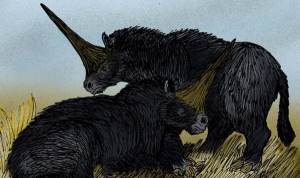Elasmotherium, also known as the Giant Rhinoceros or the Giant Siberian Unicorn, is an extinct species of rhino that lived in the Eurasian area in the Late Pliocene and Pleistocene eras. They have been documented from 2.6 million years ago, but the most recent fossils come from around 29,000 years ago. The best known of this species, the E. sibiricum , was the size of a mammoth, covered in hair, and is thought to have had a large horn protruding from its forehead, hence the title “Siberian Unicorn”. According to early estimated descriptions, the beast stood around 2 meters (6.56 ft.) tall, 4.5 meters (14.76 ft.) long, and weighted an impressive 4 tonnes.
Deciphering the Siberian Unicorn’s Story
The species, Elasmotherium, was first named in 1808 by Johan Fischer von Waldheim, the Dirécteur Perpétuel of the Natural History Museum at Moscow University. All he produced to argue his case was the lower jaw, donated to the museum by Yekaterina Romanovna Vorontsova-Dashkova. But from this, the species was named and studied further.
Orthodox Church petitions UN over Hagia Sophia
Russia warns Turkey over downing of Armenian Su-25 jet, saying it would retaliate
In March 2016, a beautifully preserved skull was found in the Pavlodar region of Kazakhstan proving that the animal lived until the Pleistocene era, some 29,000 years ago, instead of the previously held belief that they had died out 350,000 years ago. Based on the size and condition of the skull, it has been suggested that it was a very old male, but it is uncertain how the beast died.
Read more: ancient-origins
Ask me anything
Explore related questions





